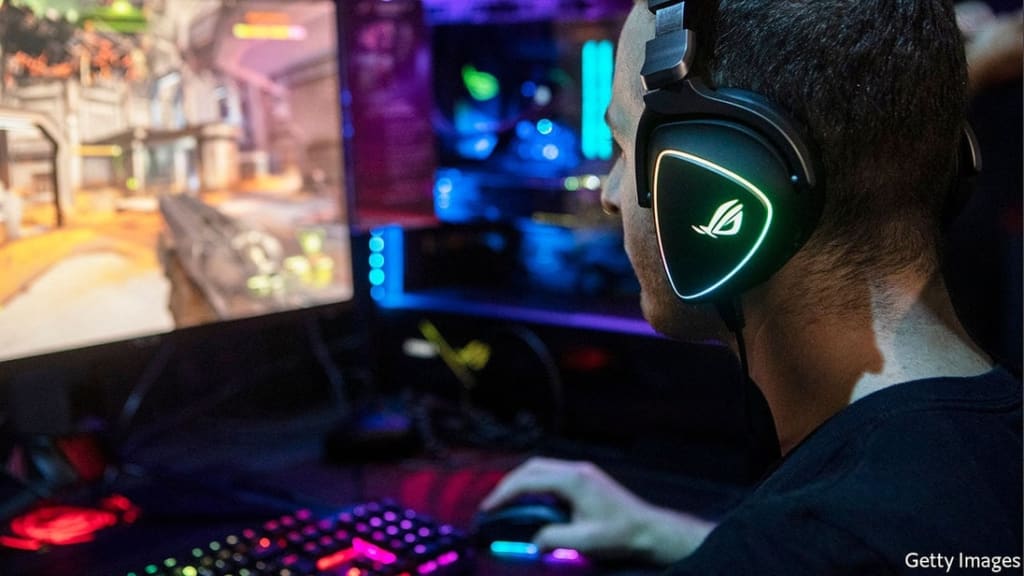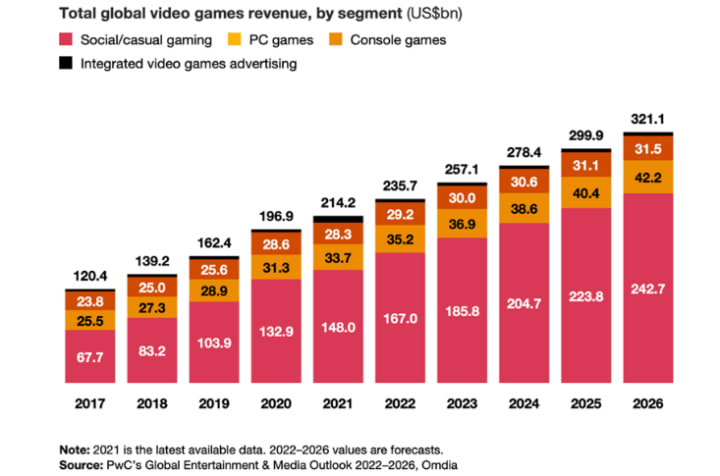The rise and rise of video games
Covid-19 has drawn renewed attention to an under-appreciated industry

The rise and rise of video games
The entertainment industry has reacted quickly to capture people's attention with live-streams of concerts, opera performances, museum tours, and more as THE COVID-19 epidemic has forced billions of people over the world to spend more time at home. According to market research company Nielsen, Americans watched TV 60% more often during previous crises; figures from Italy and South Korea indicate that daily TV viewing is up 12% and 17%, respectively.
The effect on the video game industry could be much bigger when more people start playing or play for longer periods of time.
Verizon claims that since limits were put in place in America, internet traffic for video games has surged overall by 75%. Developer of video games Bungie, , claims that global user engagement for its game "Destiny 2" is up 10% everyday on average, and in the markets hardest hit by the coronavirus, it has even increased by up to 20%.
(During the epidemic, Ndemic Creations' "Plague, Inc," a mobile game in which the player assumes the role of a deadly infection, became the most downloaded app in China.) Leading online video game retailer Steam recently reached a peak of 20.3 million concurrent players, an increase of 11% from the previous high. Twitch, which enables gamers to live-stream videos of their game play, has seen a more than doubling in its average viewership.
This captures the current social aspect of video gaming. More than a digital rendition of a board game or an interactive movie, many analysts and business leaders view them as social networks. Similar to how teenagers used to linger at a mall or talk on the phone for hours after school, players use these games as a way to interact with and spend time with their friends.
The most well-liked games right now focus on multiplayer activities that are constantly updated with fresh challenges and content and go far beyond combat-based games like "Call of Duty" or "Street Fighter."
If you’re not gaming already, there’s a chance you might be soon. The video game sector is booming – and it’s tipped to keep on growing.
The expansion is expected to make the global gaming industry worth $321 billion by 2026, according to PwC’s Global Entertainment and Media Outlook 2022-26.

Global gaming industry revenues are expected to exceed $320 billion by 2026.
The expansion is being driven by social and casual gaming after millions of people picked up their controllers to escape the boredom and isolation of COVID-19 lockdowns.
“People were looking for ways to both entertain themselves and maintain their social connections,” says Bartosz Skwarczek, co-founder and CEO of online gaming marketplace G2A.com. “Gaming has so often been painted with the wrong brush – stereotyped as being isolating and unsociable. However, the pandemic has shown this could not be further from the truth.”
Pandemic positives for gaming
Many players believe gaming helped their mental health during lockdowns. A survey of European gamers suggested 16% felt this way, with those spending time on multiplayer genres feeling especially positive.
So many existing and new gamers splashed out on games, consoles and other kit during the pandemic that the market expanded by 26% between 2019 and 2021. “The game industry’s swimming in cash,” Professor Joost van Dreunen of New York University told The New York Times at the height of the boom. “It’s just raining money on these people, on these companies.”
Some games were boosted by perfectly timed launches. Nintendo’s Animal Crossing: New Horizons came out in March 2020 and sold 13.4 million units in its first six weeks. It has gone on to become one of the best-selling Nintendo Switch games of all time.‘Unacceptable’ price rises
One potential obstacle is the rising costs of games, which G2A.com’s Skwarczek is concerned could slow down progress. Writing for Forbes, he says: “We now sit on the verge of the $70 game becoming commonplace. At a time when many are experiencing financial challenges, this is unacceptable … current and projected future pricing is ostracizing a significant proportion of people that keep the gaming sector ticking.”
Although the long-term performance of the gaming sector looks strong, the kind of spending spree seen during pandemic lockdowns can’t last forever, according to UK-based market researchers Ampere Analysis, who forecast a 1.2% decline in 2022.
“After two years of huge expansion, the games market is poised to hand back a bit of that growth in 2022,” Research Ddirector Piers Harding-Rolls says. “Even so, the year will end well ahead of pre-pandemic performance, and the outlook for the sector as a whole remains positive.”
About the Creator
Enjoyed the story? Support the Creator.
Subscribe for free to receive all their stories in your feed. You could also pledge your support or give them a one-off tip, letting them know you appreciate their work.






Comments
There are no comments for this story
Be the first to respond and start the conversation.